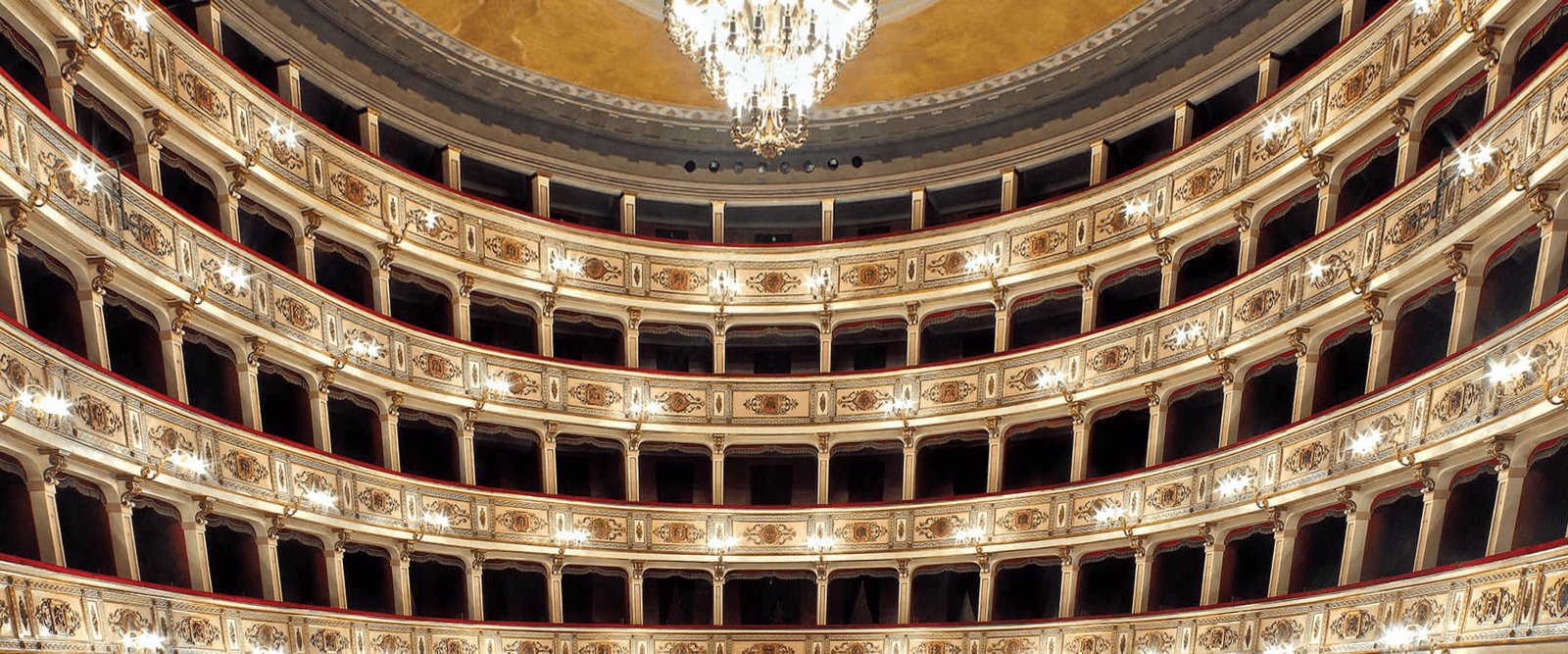
Teatro dell’Aquila
Inaugurated in 1792, the theater stands as considered one of the largest in the Marche area, a grand testomony to architectural prowess. Designed with the aid of the famend architect Cosimo Morelli in 1780, it changed the old wooden theater located in the Palazzo dei Priori, known as “dell’Aquila” in homage to the metropolis’s majestic image, the eagle. Despite numerous attempts over the years to feature a huge facade, the theater remains precise in its lack thereof. Instead, the main entrance is discreetly located on certainly one of its aspects, including to its allure and man or woman. Throughout its storied records, the theater has hosted an array of esteemed artists, from sopranos and tenors to singers and actors of global acclaim. Their performances have graced its degree, captivating audiences and leaving an indelible mark on the cultural panorama of Fermo.
The Teatro dell’Aquila stands as a beacon of Fermo‘s illustrious cultural history, drawing enthusiasts and acclaimed artists from both country wide and worldwide spheres. Its wealthy records and colourful programming provide a diverse array of occasions, consisting of opera, song, and theatrical performances, catering to audiences of every age.Collaborations with nearby agencies together with AMAT Associazione Marchigiana Attività Teatrali, the Fondazione Rete Lirica delle Marche, and the FORM Fondazione Orchestra Regionale delle Marche make certain a dynamic theater season, providing prestigious lyrical productions and symphony orchestra concert events. This synergy elevates Fermo‘s cultural panorama, enriching the town’s cultural offerings.Renowned Italian and international artists have graced the level of Teatro dell’Aquila, delivering memorable performances to captivated audiences. From acclaimed actors like Toni Servillo and Pierfrancesco Favino to celebrated directors inclusive of Cristina Comencini, the theater has hosted a multitude of skills.In addition to theatrical performances, the Teatro dell’Aquila actively fosters artistic education some of the kids thru drama colleges and performing classes. Initiatives inclusive of Opera Domani and A tutta velocità inspire young citizens to explore the sector of theater, nurturing a deeper appreciation for the humanities within the community. Through those endeavors, Fermo City Hallreaffirms its dedication to cultivating a vibrant cultural scene for generations to come.
The creation of the Theatre confronted severa setbacks, with interruptions due to each monetary constraints and disagreements over its place. The site to start with contained the theater’s front corridor, which faced Palazzo Apostolico and housed the ancient donjon, a relic of the Girfalco fortification’s walls.Despite these demanding situations, the first performance came about on September 26, 1790, serving as a trial run to assess the mechanization, painting, and lighting fixtures of the Teatro dell’Aquila. The respectable opening occurred in August 1791, featuring a performance of Giuseppe Giordani‘s drama, “The Destruction of Jerusalem.”However, via 1791, the development turned into nevertheless incomplete. The “fabbrica della Nobiltà” had best reached the ground floor, with the 2 upper floors and 18th-century linking staircase added by means of dressmaker Paglialunga among 1791 and 1793.Since its inception, the Theater has served diverse functions beyond theatrical performances. In November 1793, legal professional Vincenzo Falcone rented the distance for personal residence, albeit with restrictions throughout performances. The completion of the “Fabbrica dei Musici” in 1793 caused a renting contract with Candido and Giò Battista Germani, who acted as custodians. Despite its establishing, the Teatro dell’Aquila faced grievance from citizens, prompting extensive alterations to the stage and indoors finishings. The stage become decreased from 3 arcs to 1, and further paintings become required to finish surroundings painting and hall decorations. Following its closure after Carnival in 1792, the theater reopened briefly in 1796 before falling into disuse until 1800. Architect Giuseppe Lucatelli oversaw further adjustments to the level and indoors among 1796 and 1798, which include the portray of the ceiling and scenes. Despite ongoing renovations, the Theater resumed operations in 1800, website hosting performances and Carnival celebrations until 1826. Through periods of uncertainty and transformation, the Teatro dell’Aquila remained a critical cultural hub in Fermo‘s records.

